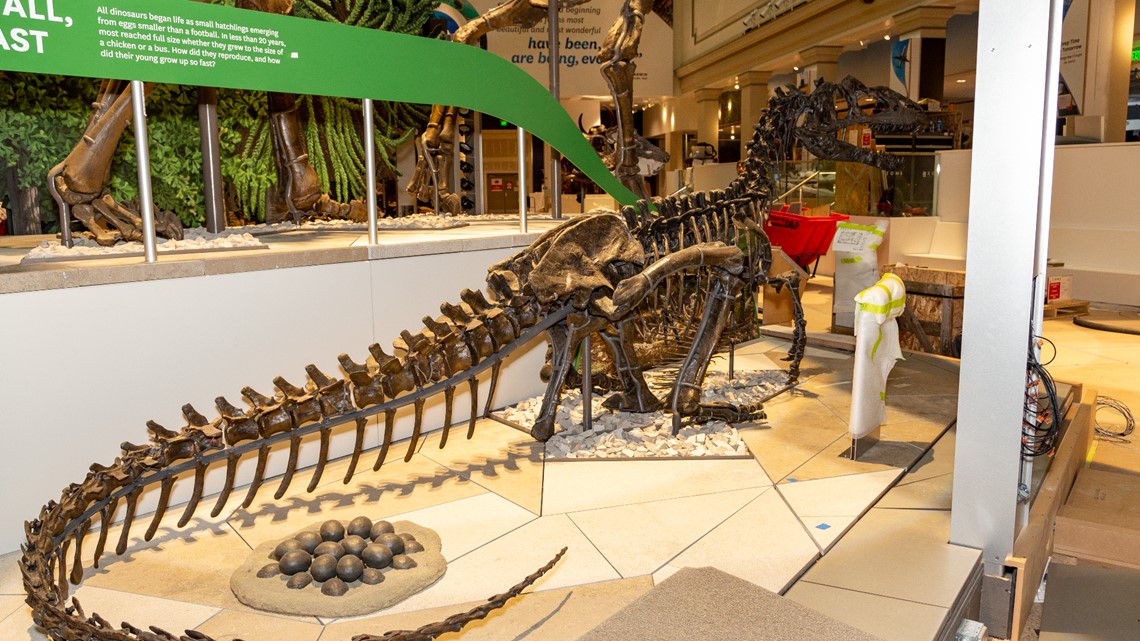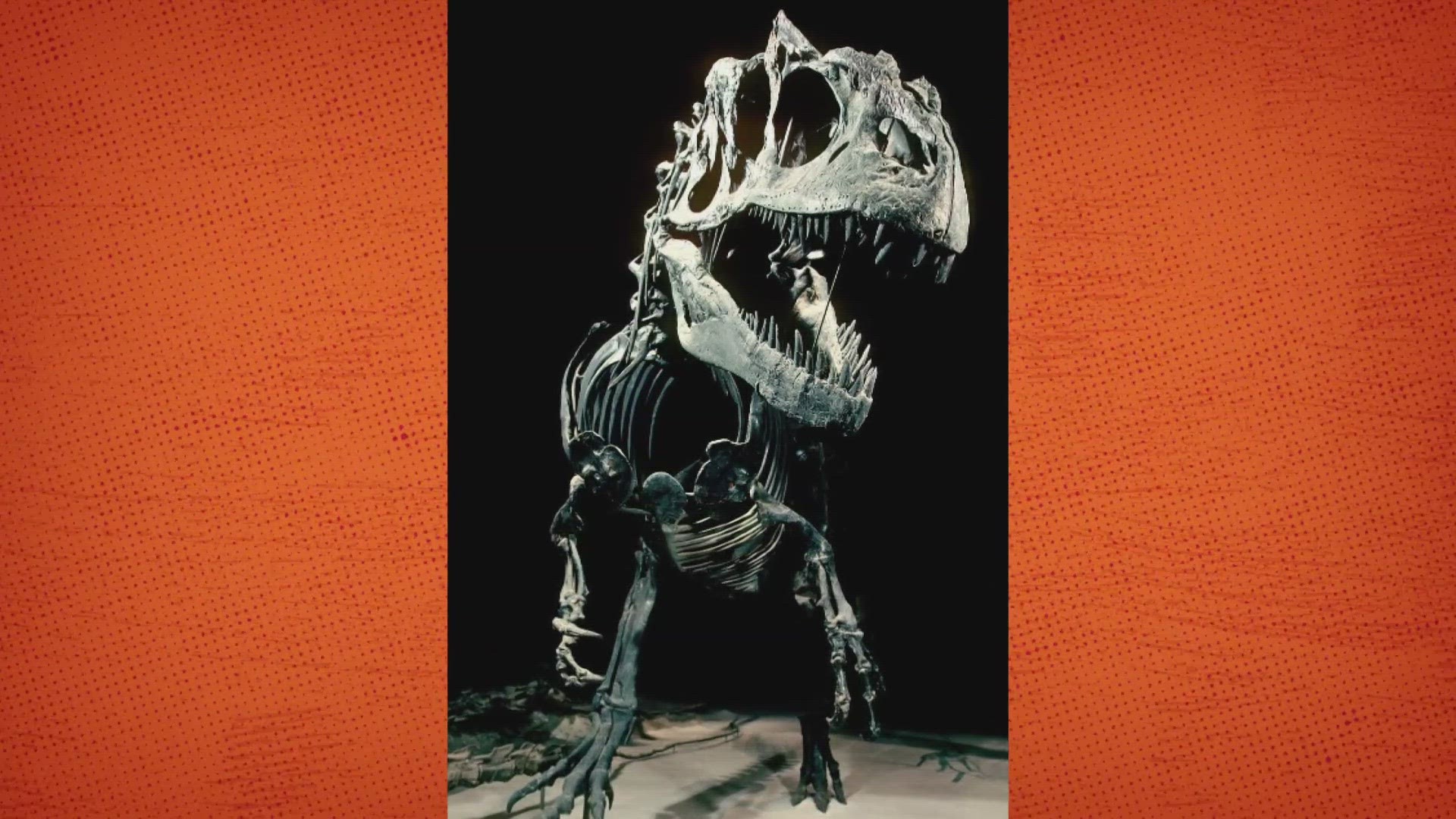WASHINGTON — A dinosaur fossil at the Smithsonian's National Museum of Natural History is celebrating a big achievement for one of its fossils. Its fossilized skeleton of the Jurassic dinosaur Allosaurus has officially been named the type specimen for the entire species. Basically, it's the best example of this type of skeleton anywhere in the world.
The Allosaurus, which is displayed in the museum's David H. Koch Hall of Fossils — Deep Time, is now the scientific standard for the prehistoric predator. That means it's the single physical example researchers will refer to when describing new fossils of Allosaurus fragilis.
It's a coveted scientific honor, recently bestowed by members of International Commission on Zoological Nomenclature (ICZN). According to paleontologist Matthew Carrano, the museum’s curator of dinosauria, the change was more than a decade in the making.


“In 2010, a petition was made to the ICZN to solve the problem that the very famous and scientifically important dinosaur A. fragilis was based on materials that couldn’t really be identified as anything more than a non-descript predatory dinosaur,” Carrano said. “This decision really emphasizes how important our specimen is — both historically and in the present — for dinosaur science.”
The 20-foot predator terrorized other dinosaurs during the Late Jurassic Period, some 150 million years ago, the museum says. It lived in western North America alongside other well-known species like the Stegosaurus.
The museum is celebrating the fifth anniversary of the David H Koch Hall of Fossils — Deep Time. Along with the Allosaurus, the hall features some 700 mounted fossil specimens.
To see the dinosaur for yourself, and learn more about it, visit the National Museum of Natural History. It's open daily from 10 a.m. to 5:30 p.m. Admission is free.
Do you have a news tip on this story or any other story? We want to hear from you. Tell us about it by emailing newstips@wusa9.com.
MORE WAYS TO GET WUSA9
DOWNLOAD THE WUSA9 APP
Apple App Store: WUSA9 News on Apple
Google Play Store: WUSA9 News on Android
HOW TO ADD THE FREE WUSA9+ APP TO YOUR STREAMING DEVICE
ROKU: add the channel from the ROKU store or by searching for WUSA9.
For both Apple TV and Fire TV, search for "WUSA9" to find the free app to add to your account. Another option for Fire TV is to have the app delivered directly to your Fire TV through Amazon.
SIGN UP TO RECEIVE WUSA9 NEWSLETTER
Subscribe to our daily WUSA9 Newsletter for top stories from WUSA9 curated daily just for you. Get content and information right now for can’t-miss stories, Commanders content, weather, and more delivered right to your inbox.

